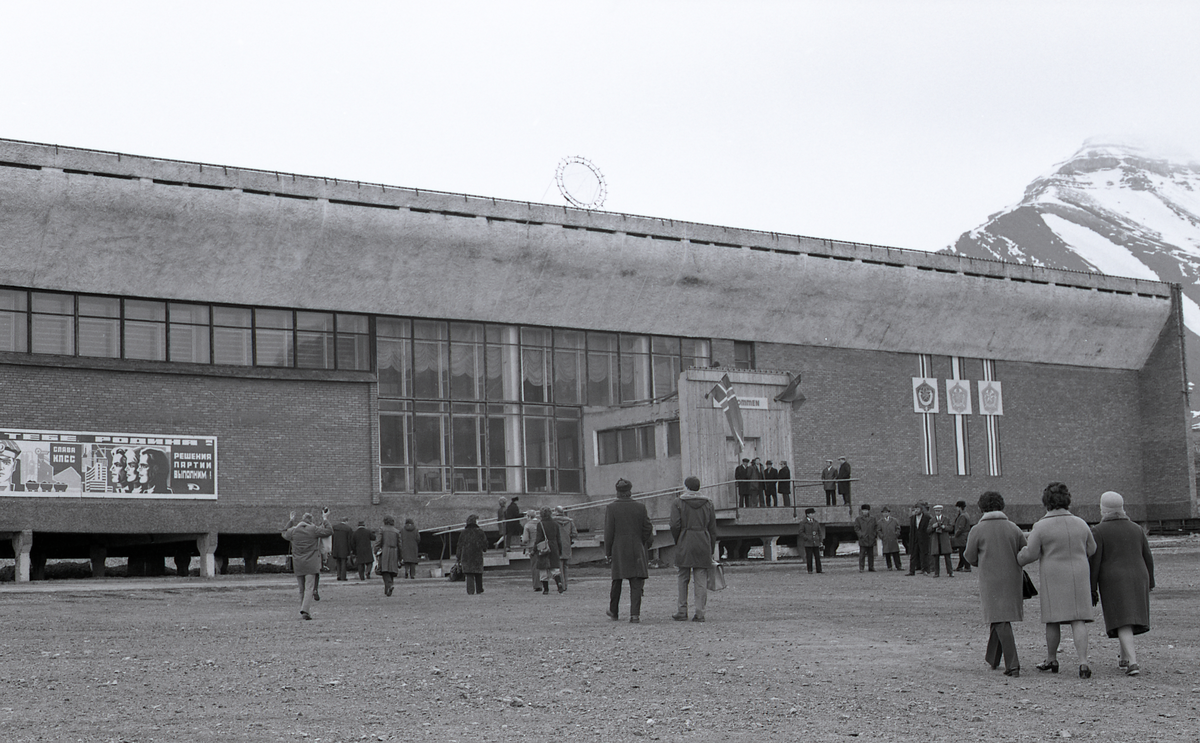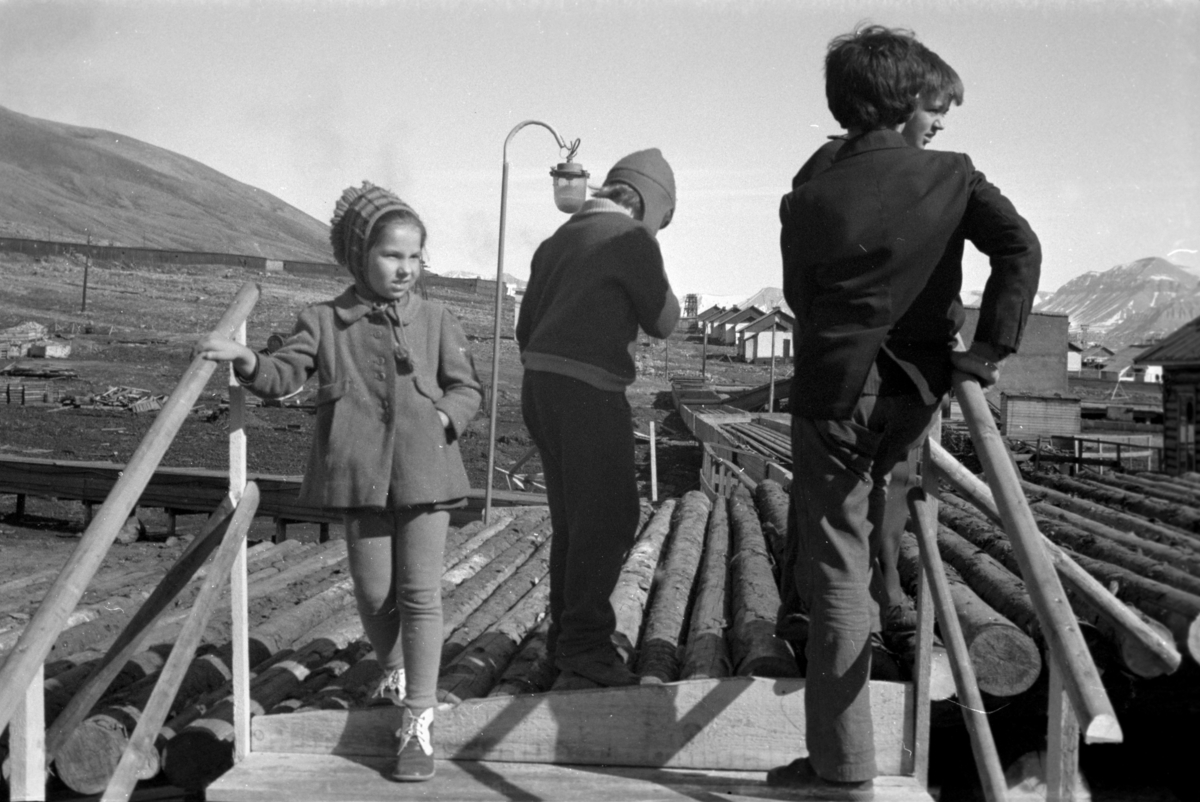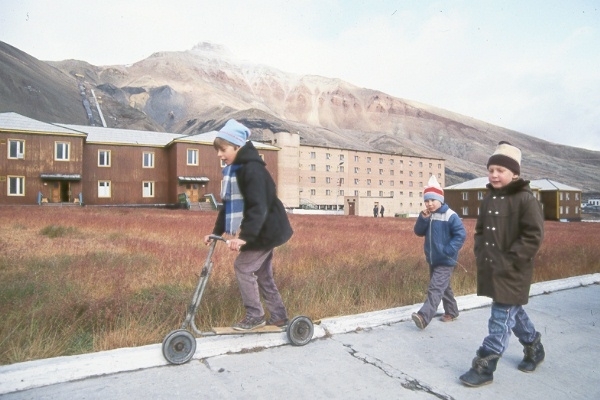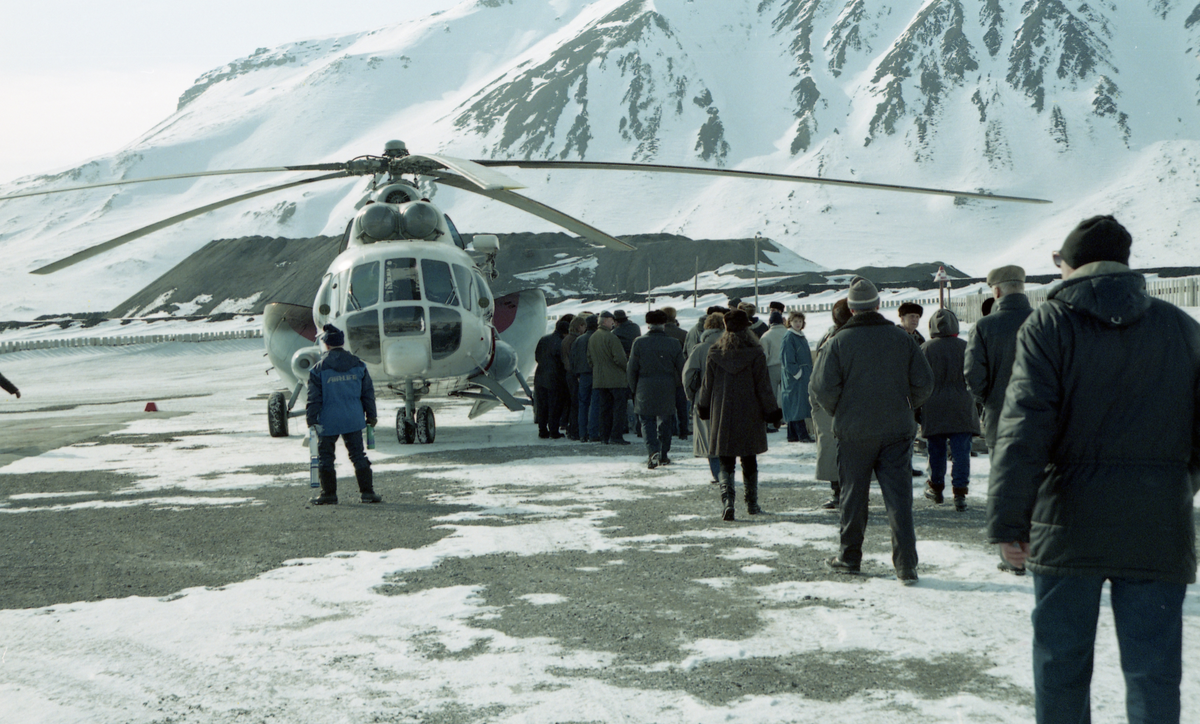After the war, the Soviet Union needed coal for reconstruction, but many of the mines in the Donbas region had been destroyed during the conflict. The Soviets resumed coal mining on Svalbard in 1946, and Pyramiden — which had largely been spared from the war’s devastation — became the base of Soviet operations until the consulate was moved back to Barentsburg in 1950.
As part of the Ninth Five-Year Plan, the facilities were expanded and modernized between 1971 and 1975. A massive cultural center was built at the end of a wide avenue, grass from the mainland was imported and planted, and a saltwater swimming pool was constructed to improve the welfare offerings for the town’s residents. As in other Soviet mining communities, the standard of living was higher than in the Norwegian settlements — but Pyramiden was in a class of its own. Here, the Soviet Union and socialism could present themselves to the West at their very best. With state-of-the-art facilities and carefully selected workers, Pyramiden was in many ways a utopian society. Several of the town’s former residents remember their time there as the best period of their lives, and some have even said that this was the only place on Earth where communism was truly achieved.
In the 1990s, Russia’s economy grew tighter, and subsidies decreased in line with the dwindling coal reserves. When a significant number of the town’s residents died in the Operafjellet air disaster in 1996, the Russian company decided to consolidate operations in Barentsburg. Mining ceased, and the town was abandoned in 1998. Thanks to good preservation conditions and ongoing maintenance, the town still stands as a time capsule of the Soviet Union’s golden age on Svalbard. Today, the abandoned settlement is a destination for many who visit the archipelago.



